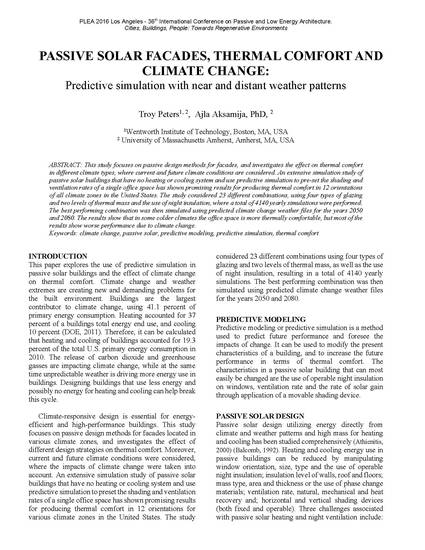
Article
Passive Solar Facades, Thermal Comfort and Climate Change: Predictive Simulations with Near and Distant Weather Patterns
Proceedings of the Passive and Low Energy Architecture (PLEA) 2016 Conference (Cities, Buildings, People: Towards Regenerative Environments)
(2016)
Abstract
This study focuses on passive design methods for facades, and investigates the effect on thermal comfort in different climate types, where current and future climate conditions are considered. An extensive simulation study of passive solar buildings that have no heating or cooling system and use predictive modelling to pre-set the shading and ventilation rates of a single office space has shown promising results for producing thermal comfort in 12 orientations of all climate zones in the United States. The study considered 23 different combinations, using four types of glazing and two levels of thermal mass and the use of night insulation, where a total of 4140 yearly simulations were performed. The best performing combination was then simulated using predicted climate change weather files for the years 2050 and 2080. The results show that in some colder climates the office space is more thermally comfortable, but most of the results show worse performance due to climate change.
Keywords
- climate change,
- passive solar,
- predictive modeling,
- thermal comfort
Disciplines
Publication Date
2016
Citation Information
Troy Peters and Ajla Aksamija. "Passive Solar Facades, Thermal Comfort and Climate Change: Predictive Simulations with Near and Distant Weather Patterns" Proceedings of the Passive and Low Energy Architecture (PLEA) 2016 Conference (Cities, Buildings, People: Towards Regenerative Environments) (2016) Available at: http://works.bepress.com/ajla_aksamija/114/
